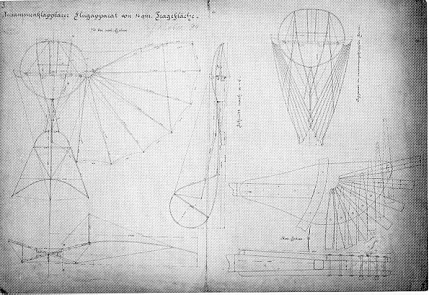| After all neccessary documentation about the original has been put
together, one should figure out what kind of materials is required to realize the project
and whether one on his own is able to convert it into the finished model. For the
production of our Lilienthal-models we do exclusively use the same materials that have
also been used by Otto Lilienthal for the construction of his full size gliders.With
special regard to the exclusiveness of our models we avoid using other materials and
changing them by paint to achieve an original illusion. The main material used to
construct our Lilienthal-models is willow-rod - of course very young willow-rods. Basic
requirement for the successfull realization of such a project is of course comprehensive
knowledge with the convertiation of the materials. It is for example by far not that easy
it may look to work with willow-rods. One will meet the same difficulties as Otto
Lilienthal did. The material can only be cut during a special period of the year,
otherwise it will not be possible to peel it without problems. On one hand they have to be
stored for a specific period of time. If not, the cells of the tree is filled with too
much water what results in the effect that the material can not be bend as required. On
the other hand, if stored too long, the material becomes too dry and will break when bend. Next
step is to produce working drawings from the original drawings. These can of course only
be sketches, but should be in the same scale the model is decided to be constructed. Upon
these sketches one can work easily and even check the size of the build parts or
components.
Of course, one should allready during the state of cenception of the model figure out
how and if technical features of the original can be realized with the model. The
technical simplicity of Otto Lilienthal`s gliders do allow to realize every technical
feature of the original in the chosen scale of 1/15. Our models can for example be
disassembled the same way Otto Lilienthal disassembled his full size gliders for
transportiation. The shown photographs do also give an impression of how the wing of the
models can be folded - exactly the way it was done on the original pieces. Also the
stabilizer section can be mounted from the "fuselage" and the flying and landing
wires can be hooked off by the means of very small metal hooks. For a collector it is of
secondary meaning whether he can use these features or not, especially since the model is
covered under glass at the end - what counts is that the features are working and do
comprise the original in every respect.
The final errection of the models do require special attention. It should only be
mentioned here that these models are exclusively done in pure handwork. Since no jigs are
used to bore small holes for the very little bolts a absolute quiet hand is neccesary.
Some of the small holes do only have a diameter of some 0,25 milimeters. The same is for
the bolts.
Last, but not least the flying and landing wires have to be pulled in in a regular and
carefull way. At the end the model would not work in original size, if the wings are
twisted. And by the way - what would such a model look like?
I hope you liked this insight.
Your`s

Achim S. Engels |
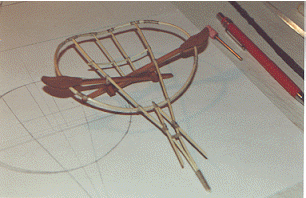 The heart of a lilienthal-construction.
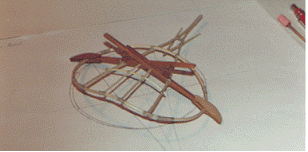

"Fuselage" with stabilizer parts.
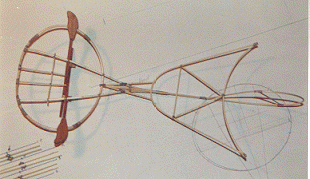

The working foldable wings of the gliders.
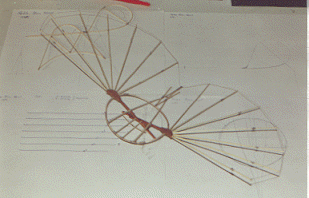

|

